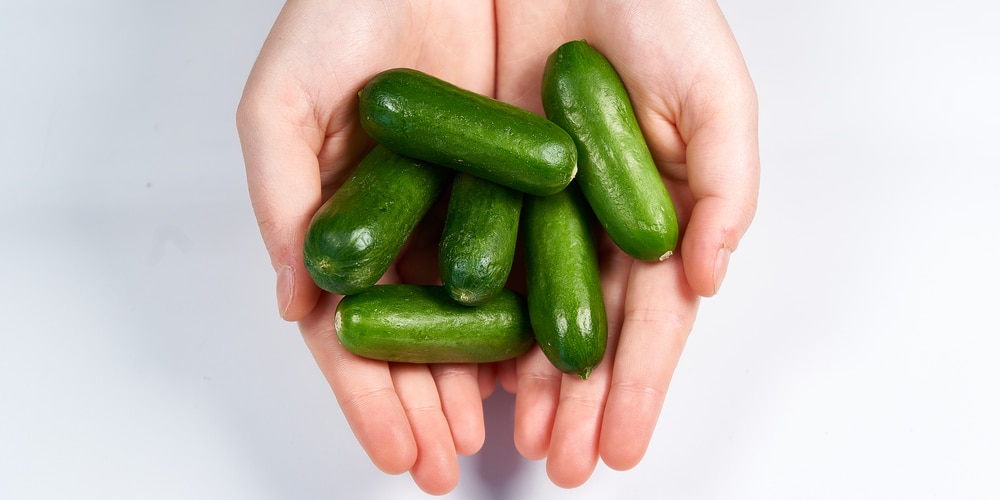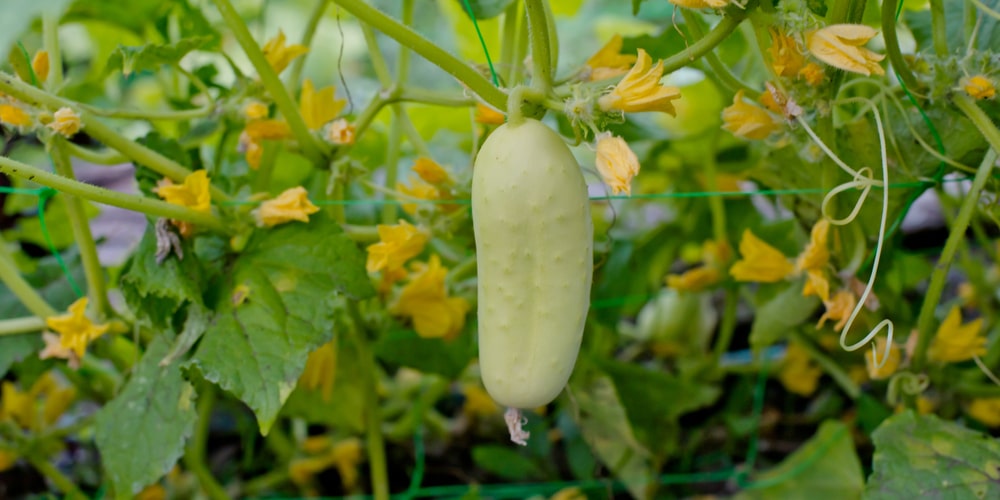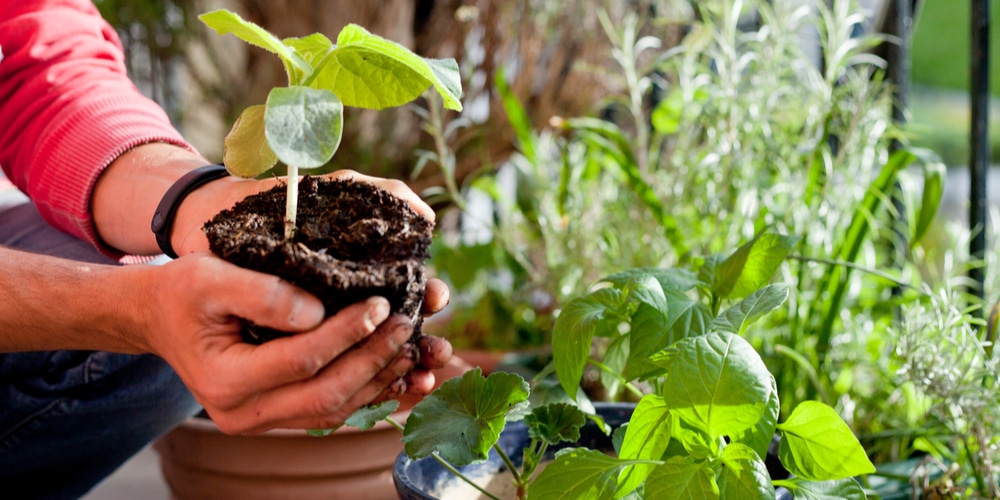If you’ve ever grown a cucumber plant, you know that the fruits of your labor are well worth it. Cucumbers are delicious and nutritious, and they’re prized for their cool, refreshing flavor.
If you’ve recently planted cucumbers and noticed that they’re not producing fruit just yet, is this something you should worry about? Is there anything else you can do to encourage your cucumber plant to bear fruit?
Cucumbers are a warm-weather crop, so they won’t start to produce fruit until the weather warms up. Generally speaking, cucumbers start to bear fruits during the summer once the temperatures consistently stay above 70 degrees Fahrenheit.
This may take around 35 to 60 days after planting, depending on the type of cucumber plant you have. Additionally, bear in mind that if grown from seeds, cucumber plants can take up to two weeks longer to produce fruit.
Again, this may vary depending on the cucumber variety you have planted. Some cucumber plants are faster-bearing than others.
For example, the “Lemon” cucumber plant typically bears fruit around 50 days after planting. Meanwhile, the ” Armenian Yard-Long” cucumber plant can take up to 70 days before it produces fruit. Different factors also come to play, such as soil type and moisture levels.
When Can You Expect Cucumber Plants to Produce Fruit?
Most cucumber plants will begin to produce fruit about 60 days after they are planted. However, this can vary depending on the variety of cucumbers and the growing conditions.
For instance, if the plants are grown from seed, an additional 10 to 14 days may be required before fruit production begins. Also, fast-growing varieties may produce fruit earlier than slower-growing varieties.
Temperature and other factors may also play a huge role in the cucumber plant’s fruit production. For instance, if the temperature is too cool, the cucumbers may not mature properly.
If it’s too hot, the plants may produce fewer fruits but would bear fruits sooner than expected. The ideal temperature for cucumber growth is between 70 and 95 degrees Fahrenheit.
In general, cucumber plants will produce fruits throughout the summer months. The first fruits are often small and green, but as the season progresses, these fruits will gradually increase in size and turn a deep green or yellow color. By late summer, most cucumbers will be finally ripe and ready to harvest.
Cucumber Plants: How Much Fruit Can It Produce?
Given that they are grown in the right conditions, a single cucumber plant can yield around 20 cucumbers, totaling around 2 pounds of fruits!
This may even increase with proper care and maintenance. For instance, if you consistently fertilize and water the plant, it would likely produce a higher cucumber yield.
Different cucumber varieties will also affect the overall yield. Some high-yielding varieties can produce up to 70 cucumbers per plant!
Again, this depends on the variety and growing conditions, but it just goes to show that cucumber plants can be quite productive.
Will My Cucumber Plant Die After I Harvest?
After a long, hot summer of tending your cucumber plant, finally harvesting those crisp, juicy cucumbers is a rewarding experience. But you may be wondering – what happens to the plant after you harvest the cucumbers? Will it die?
With all that said, it’s important to remember that cucumber plants are annuals. This means that they will only produce fruit for one season before they die off.
Once the fruits are harvested, the plant will gradually wither and die. It’s completely normal, so don’t worry! You can simply replant cucumber seeds the following year to grow another batch of cucumbers.
Factors Affecting Fruit Growth and Production on Cucumber Plants
Earlier, we talked about the different factors affecting how much fruit cucumber plants can produce.
While we are all aware that most of the factors depend on the variety, there are also other external factors, such as temperature, location, fertilizer needs, etc.
Let’s take a more detailed look at each of these factors:
USDA Location or Temperature
One of the most important factors that will affect your cucumber plant is the USDA location or temperature zone you live in.
This is because different cucumber varieties require different amounts of heat to mature properly. If you live in a warmer climate, then you can grow almost any type of cucumber without worry.
However, if you live in a cooler climate, then you would need to choose a cucumber variety that can tolerate lower temperatures.
Other factors, such as the amount of sunlight and rainfall in your area, can also affect the growth and production of cucumber plants.
Cucumbers need at least six hours of sunlight per day to grow properly. They also need consistent moisture, so make sure to water your cucumber plants regularly.
Planting your cucumbers too early during the season can also result in lower yields. This is because cucumbers are sensitive to frost and cold temperatures. If the temperature drops below 50 degrees Fahrenheit, the plants will likely die off.
Fertilizer Needs
All plants need nutrients to grow, and cucumbers are no exception. A lack of nitrogen, phosphorus, or potassium can all lead to stunted growth and reduced yields. Cucumber plants are particularly heavy feeders, so it is important to ensure they get enough fertilizer.
Compost or manure can be worked into the soil before planting, or a balanced fertilizer can be applied throughout the growing season. It is also important to keep an eye on the pH level of the soil, as cucumbers prefer a slightly acidic to a neutral environment.
In addition to fertilizer, cucumber plants also need plenty of water. They are 90% water by weight, so it is essential to keep them hydrated. Water stress can cause the leaves to wilt and the fruits to become small and misshapen. Make sure to water your cucumber plants regularly, especially during hot weather.
Pest and Disease Control
Cucumber plants require well-drained, sandy soils with a pH between 6.0 and 6.8. They are heavy feeders and require a lot of nutrients for optimal growth.
Cucumbers are also susceptible to a number of pests and diseases, so regular monitoring and control measures are necessary to ensure a good crop.
One of the most common cucumber pests is the cucumber beetle, which can cause serious damage to leaves and fruits. Cucumber plants are also susceptible to powdery mildew, a fungal disease that can seriously affect plant growth and fruit production.
In addition, cucumbers are often attacked by aphids, scale insects, and whiteflies. All of these pests can have a significant impact on cucumber yield.
To prevent these problems, it is important to practice good cucumber plant care. This includes proper watering, fertilization, and pest control. Additionally, growing cucumbers in raised beds can also help improve drainage and reduce the risk of problems.
Pruning
A cucumber plant typically has two main types of leaves: the larger, more deeply lobed leaves that grow on the main stem and the smaller, more finely divided leaves that grow on the side branches.
Both types of leaves play an important role in fruit production. The main-stem leaves provide the plant with energy through photosynthesis, while the side-branch leaves help to regulate temperature and humidity levels around the developing fruit.
Pruning is a common practice that helps to increase cucumber yields by removing leaves that are shaded by the main-stem leaves or that are damaged by pests or disease.
By removing these leaves, the plant can direct more of its energy toward fruit production. In addition, pruning helps to improve air circulation around the plant, which can help to prevent disease.
To prune your cucumber plants, simply cut off any leaves that are damaged or that are shading the fruit. You can also remove any side branches that are not producing fruit.
When Do Cucumber Plants Produce Fruit: Final Thoughts
Cucumber plants produce a good bountiful harvest, 35 to 60 days on average if you’re transplanting, a little longer if you’re direct seeding.
If you want to get an earlier start on the season, you can start cucumber plants indoors about three weeks before the last frost date in your area. Just be sure to harden them off gradually before transplanting them outside.
With proper care, cucumber plants will produce healthy fruits that are perfect for eating fresh, pickling, or canning!
Don’t forget to take some time into account the cucumber’s growth when planning your garden. They can take up quite a bit of space when fully grown!
Related Article: Can You Eat a Yellow Cucumber?


